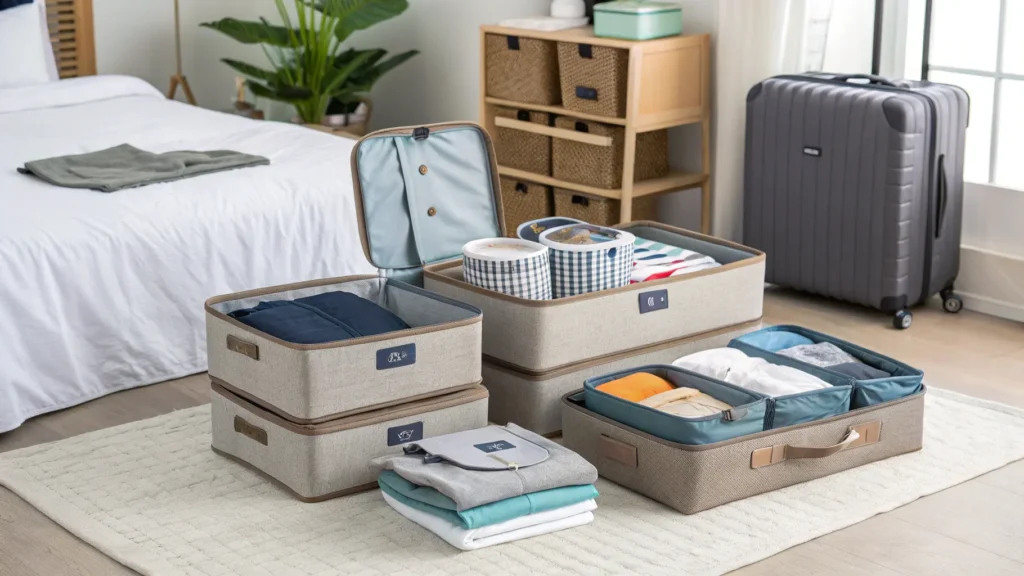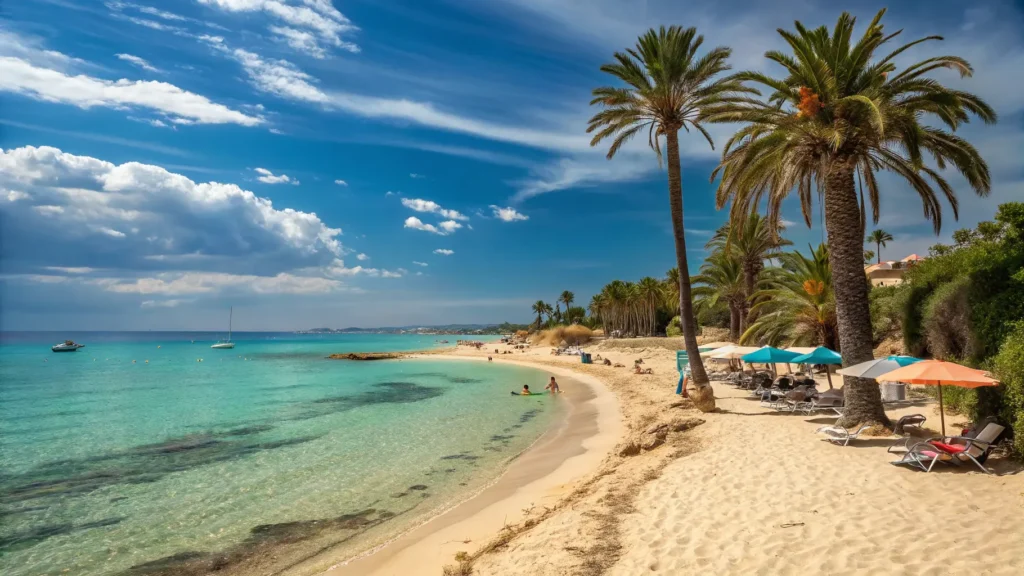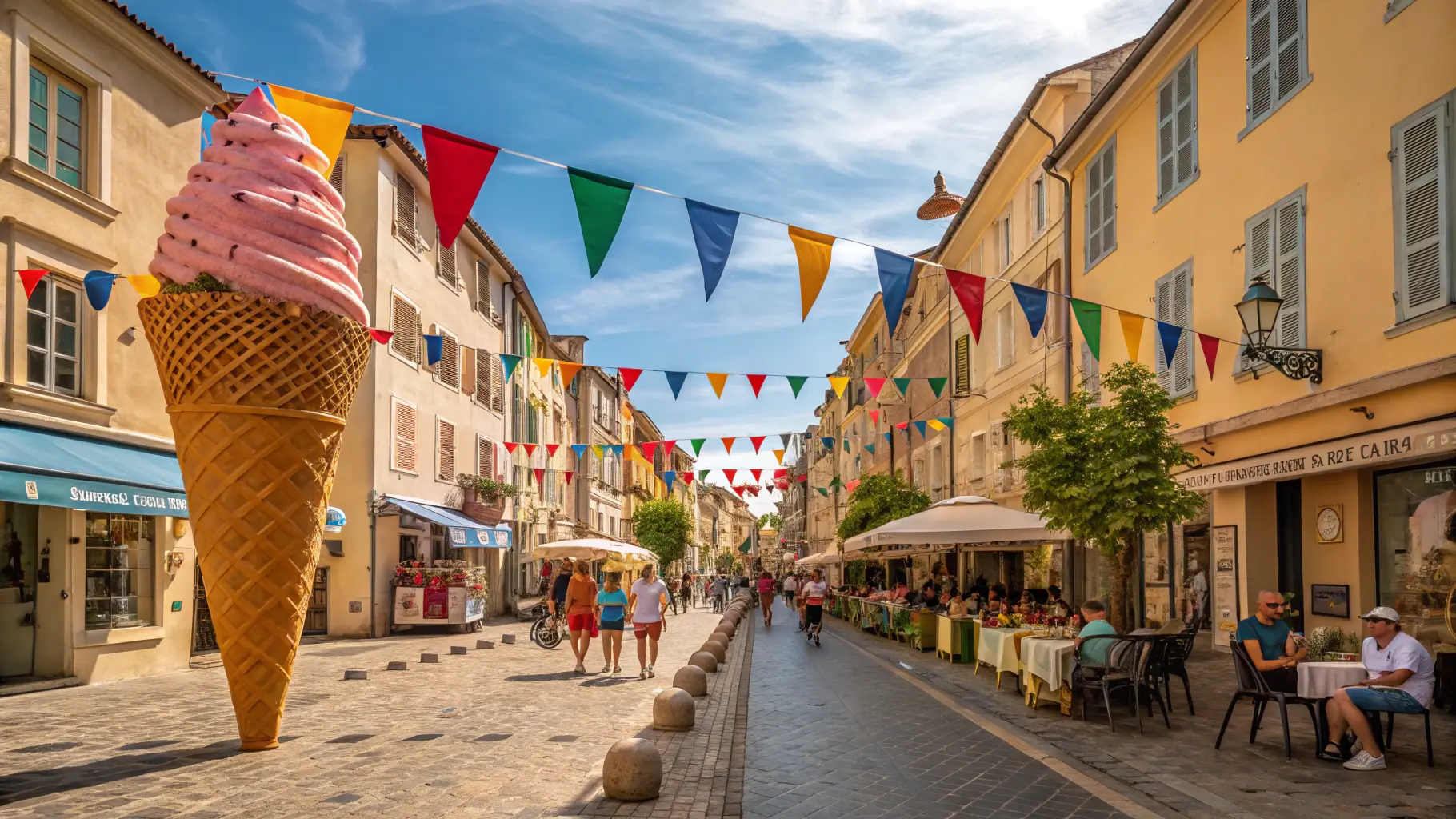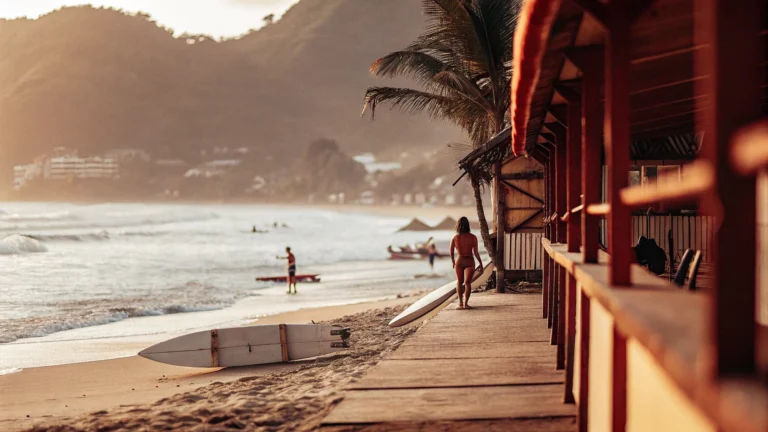Euro Summer Aesthetic How to Pack for 2 Weeks in Style
It’s 11:47 PM, and I’m sitting on my bedroom floor surrounded by rejected outfits. My flight to Barcelona leaves in eighteen hours, and my suitcase looks like a clothing store exploded. Every piece I picked felt wrong—too flashy for wandering through Parisian neighborhoods, too casual for Italian dinners, and nowhere close to the effortless euro summer aesthetic I was going for. Everything screamed “tourist” instead of chic European summer vibes.
Three weeks later, I’m back home with a completely different perspective. Those two weeks taught me something Instagram never shows you: European style isn’t about having perfect outfits. It’s about understanding a different approach to getting dressed.
Here’s what happened when I stopped overthinking and started observing how real Europeans put themselves together every day.
Table of Contents
The Real Story Behind the Euro Summer Aesthetic Trend
Forget everything you’ve seen on social media for a minute. Real European style comes from a completely different mindset than what most of us grew up with.
Europeans buy fewer clothes. But the ones they choose work harder. They’ll wear the same white shirt three different ways in one week, and somehow it never looks boring. They understand something we often miss: confidence comes from feeling comfortable in what you’re wearing, not from having the newest everything.
During my trip, I spent hours people-watching in cafes (okay, maybe that sounds creepy, but hear me out). The women who caught my attention weren’t wearing anything groundbreaking. They had on simple pieces – a well-fitted pair of pants, a cotton top, maybe a scarf. But everything fit properly. Everything looked intentional.
What makes European summer style work:
- Clothes that actually fit your body
- Colors that don’t fight with each other
- Fabrics that move with you and don’t wrinkle
- Pieces you can mix up without thinking too hard
- Accessories that add interest without screaming for attention
The biggest difference? They dress for their actual lives, not for photos.
Building a Wardrobe That Travels Smart
Here’s where I went completely wrong on previous trips. I’d pack different outfits for every single day, like I was going to a two-week costume party. The result? Overpacked bags and still nothing to wear.
Europeans taught me about editing. They get rid of things that don’t work and keep the ones that do. For travel, this means every single piece in your suitcase needs to earn its spot by working with at least three other pieces.
Start with these five foundation pieces:
A white button-up shirt that fits you perfectly. Not too tight, not billowing. This isn’t negotiable – spend time finding one that makes you feel fantastic. I wore mine eight different ways during my trip.
One pair of well-fitted pants in navy or black. Not leggings, not sweatpants. Proper pants that you could wear to meet someone’s parents. High-waisted styles work great because they pair with everything.
A simple dress that doesn’t need special undergarments or shoes. I found mine at a vintage shop for twenty euros – navy cotton with short sleeves. It worked for museums, dinners, even as a beach cover-up.
A lightweight sweater you actually like wearing. Restaurants in Europe can be surprisingly chilly, even in July. Plus, you’ll want something for those late evening walks.
One perfect skirt that hits at the right spot on your legs. Whether that’s knee-length or midi depends on your body, but find the length that makes you feel confident walking into any room.
The Color Strategy That Actually Works
Most Americans pack like they’re afraid of looking boring. Europeans do the opposite – they embrace what some might call “boring” and make it interesting through fit and texture.
Pick three colors. That’s it. Three colors that look good together and good on you. Maybe it’s white, navy, and camel. Or black, gray, and cream. Or beige, olive, and white. The specific colors matter less than making sure they all play nicely together.
Then add one accent color for small touches. It could be a soft pink, a warm orange, or a light green. Use this color in scarves, shoes, or jewelry – not in major pieces like pants or dresses.
Why this works:
- Everything coordinates automatically
- You can’t make a “wrong” combination
- Your accessories go with multiple outfits
- You look intentional, not chaotic
- Packing becomes way easier
I learned this the hard way after bringing a bright red top that matched exactly nothing else in my suitcase. It hung in hotel closets for two weeks, taking up space and making me feel stupid every time I saw it.
Packing Methods That Don’t Drive You Crazy
Traditional packing advice tells you to roll everything or use packing cubes for different clothing types. But here’s what worked better for me: packing by situation, not by item type.
One cube gets your “walking around during the day” clothes. Another gets your “nice dinner” pieces. A third holds your “travel day comfort” outfits. This way, you’re never digging through everything to put together one complete look.
Pack these items in your carry-on:
- One complete outfit (in case your luggage gets delayed)
- All your jewelry and nice accessories
- Any medications or skincare you can’t replace easily
- One extra pair of underwear and socks
- Your nicest shoes (they’re usually the heaviest anyway)


For wrinkle prevention, tissue paper works better than you’d think. Lay sheets between folded items, especially anything silk or cotton. And honestly? A handheld steamer is worth the suitcase space. European hotel irons are hit or miss.
Shoes That Won’t Ruin Your Trip
This is where people mess up their whole aesthetic. You can nail every other aspect of European style, but if your feet hurt, you’ll look miserable. And miserable never looks chic.
You need exactly three pairs, and each one serves a different purpose.
Comfortable walking shoes: White leather sneakers remain the gold standard, but they have to be in good condition. Scuffed, dirty sneakers immediately mark you as a tourist. Clean white shoes work with everything and blend in perfectly with European casual style.
Elevated flats: Leather loafers, ballet flats, or pointed-toe flats that you can walk in comfortably. These bridge the gap between sneakers and dress shoes. I lived in my black leather loafers – they worked with pants, skirts, and dresses.
One pair of heels: Low block heels or wedges you can actually walk on cobblestones in. Test this at home first. European cities have beautiful old streets that weren’t designed for stilettos.
The key is breaking everything in before you leave. New shoes and European walking don’t mix well, trust me.
Accessories That Do the Heavy Lifting
Europeans are masters of using accessories to change their whole look without changing their clothes. One silk scarf can make the same white shirt work for morning coffee, afternoon sightseeing, and evening drinks.
Pack these versatile accessories:
- One beautiful scarf (silk or lightweight cotton)
- A structured bag that fits your daily essentials
- Simple jewelry in one metal (gold or silver, not both)
- Quality sunglasses that flatter your face
- A lightweight shawl for air conditioning and evening chill
Learn three different ways to tie your scarf before you go. Around your neck, tied to your bag, worn as a headband – small changes that refresh your whole outfit.
The trick is choosing accessories that work with everything rather than buying something specific for one outfit. That bright statement necklace might be gorgeous, but if it only works with one top, it’s not worth the suitcase space.
Weather Reality Nobody Talks About
Instagram makes European summer look like endless sunshine and perfect weather. Reality includes sudden rainstorms, surprisingly cool evenings, and air conditioning set to arctic levels.
Pack for the weather you’re actually going to encounter, not the weather you’re hoping for. Check historical weather data for your destinations, not just the forecast for next week.
Layers that work:
- A light cardigan or kimono-style jacket
- A classic trench coat (doubles as rain protection)
- A pashmina or large scarf for cold restaurants
- One warm top for unexpectedly cool days


Northern European cities can be genuinely chilly even in July. I learned this shivering through a Amsterdam canal tour in a sundress. Learn from my mistake.
The Unspoken Rules of European Dressing
Every culture has unwritten dress codes, and Europe is no exception. Understanding these helps you blend in and feel more confident.
Europeans generally dress up more than Americans for everyday activities. You won’t see many people in athletic wear unless they’re actually exercising. Restaurants often expect long pants and closed-toe shoes for dinner, even in summer.
Regional style differences:
- France: Classic, polished, never overdone
- Italy: More fashion-forward, comfortable with standing out
- Scandinavia: Minimalist, functional, high-quality basics
- Germany/Austria: Practical, well-made, conservative
- Spain: Relaxed but refined, especially in coastal areas
Research specific dress codes for places you plan to visit. Some churches require covered shoulders and long pants. Many upscale restaurants have explicit dress codes posted online.
Smart Shopping for European Style
You don’t need to spend a fortune to get this look right. Europeans are actually quite practical about spending money on clothes. They’d rather buy fewer, better pieces than lots of cheap ones.
Start with affordable basics and invest in one or two standout pieces that elevate everything else. A beautiful scarf, well-made shoes, or classic handbag can make budget pieces look expensive.
Where to save money:
- Basic cotton t-shirts and tanks
- Simple accessories like hair ties and jewelry
- Casual shorts and everyday underwear
Where to spend more:
- Well-fitted pants and jeans
- Comfortable walking shoes
- One perfect blazer or cardigan
- A bag you’ll use constantly
Thrift stores and vintage shops often have better quality pieces than fast fashion stores, and the prices are usually similar.
Mistakes That Instantly Give You Away
Certain things immediately mark you as a tourist, no matter how carefully you’ve planned your outfits. Avoid these dead giveaways:
Fashion mistakes:
- Wearing athletic shoes with everything
- Matching your bag to your shoes exactly
- Over-accessorizing (less really is more)
- Wearing shorts to dinner or cultural sites
- Flip-flops anywhere except the beach or pool
Practical mistakes:
- Carrying a huge purse or multiple bags
- Wearing obviously new clothes with tags or creases
- Choosing fashion over function for walking shoes
- Ignoring local dress codes for religious sites
The goal isn’t to trick people into thinking you’re European – it’s to show respect for local customs and feel confident in your choices.
Making Your Wardrobe Work Overtime
The best European-inspired packing trick is making each piece work in multiple situations. That white button-up shirt? It’s professional enough for business meetings, casual enough for sightseeing, and stylish enough for dinner when paired with the right accessories.
Practice outfit combinations before you travel. Take photos of different looks and save them on your phone. This eliminates decision fatigue when you’re tired and jet-lagged.
Versatile styling tricks:
- Tie shirts at the waist for a different silhouette
- Layer tops under dresses for new looks
- Use scarves as belts, headbands, or bag accessories
- Roll sleeves and pant cuffs for casual styling
- Mix textures within the same color family
The most confident-looking travelers are the ones who seem comfortable in their clothes, not the ones wearing the most expensive outfits.
Planning Your Capsule Collection
Start planning at least a month before your trip. This gives you time to find any missing pieces without panic shopping, and to practice putting outfits together.
Make a list of activities you’ll be doing and places you’ll be going. Museum visits require comfortable shoes and modest clothing. Beach days need swimwear and cover-ups. Fancy dinners call for dressier options.
Your pre-trip checklist:
- Try on every outfit combination and take photos
- Make sure all your shoes are comfortable for walking
- Check weather forecasts and pack accordingly
- Research dress codes for specific places you’ll visit
- Practice different ways to style your accessories
The preparation is what makes European style look effortless. It’s not actually effortless – it’s just well-planned.
Bringing It All Together
Real European summer style isn’t about following rules perfectly. It’s about understanding the principles and adapting them to your own personality and body.
The Europeans who inspired me the most during my trip weren’t wearing anything revolutionary. They just looked comfortable and confident in well-chosen, well-fitted clothes. They understood that good style comes from feeling good in what you’re wearing, not from following trends or trying to impress anyone.
Your goal isn’t to blend in completely or pretend to be someone you’re not. It’s to show respect for local customs, feel confident in your choices, and enjoy your travels without worrying about your clothes.
Start with the basics – good-fitting foundation pieces in colors that work together. Add accessories that make you happy. Choose comfort over fashion when walking is involved. And remember that confidence is the best accessory of all.
The most important thing I learned? European style isn’t about the clothes themselves. It’s about the confidence that comes from knowing you’ve made thoughtful choices that work for your lifestyle.
What questions do you have about packing for European travel? Have you found any pieces that work perfectly for multiple situations? I’d love to hear your experiences and help solve any packing dilemmas you’re facing.








One Comment